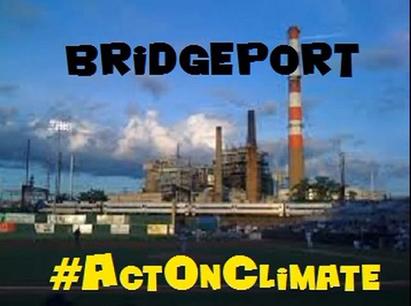
In response to environmental groups calling for action, the City Council’s Economic and Community Development and Environment Committee Tuesday night approved a resolution urging PSEG to transition its coal plant in the South End to natural gas. Easier said than done for one of the city’s largest taxpayers operating the candy-striped smokestack at the Bridgeport Harbor Generating Station.
Mayor Bill Finch’s spokesman Brett Broesder issued the following statement:
“Mayor Finch supports the spirit of this resolution and applauds committee members for helping Bridgeport move toward a cleaner energy future. Nobody is more committed than Mayor Finch to creating green jobs and producing clean energy so our kids breathe cleaner air. That’s why he successfully led the charge to bring North America’s largest fuel cell to the Park City, which powers nearly 15,000 homes with virtually pollutant-free energy. And, that’s why he’s championing projects like Green Energy Park–putting solar panels and a fuel cell atop an old and unused landfill–which will create up to 92 jobs and power 5,000 homes with virtually pollutant-free energy.”


Lennie, coverage of the city council committee vote is appropriate, but all I see here is a statement from Finch’s taxpayer-funded campaign spokesperson. Must you subject your loyal readers to this drivel? Who do you think you are, the Connecticut Post?
Mayor Grinch “supports the spirit of this resolution.” Translation, this is going down in flames.
Yup, the coal plant as I recall is a very big taxpayer in this city.
The Finch Green Mercury Vapor Park!
Landfills are a major source of the more toxic, organic mercury
Once buried, some of the inorganic mercury in the landfill is converted by bacteria living there into a more toxic form, called organic or methylated mercury. Organic mercury can be released into the atmosphere from landfills in the same way inorganic mercury is released.
Researchers have measured one organic mercury compound, dimethyl mercury, from gas destined for landfill venting at levels 1,000 times higher than what has been measured in open air (Lindberg, 2001).
Flaring, or burning landfill gas before emitting it to the atmosphere, destroys organic forms of mercury, but many landfills do not use flaring. Flaring does not destroy inorganic mercury.
Organic mercury is primarily a local pollution concern because it probably deposits quickly after being emitted. Once deposited, it can bio-concentrate up the food chain.
The Finch Green Mercury Vapor Park
U.S. Geological Survey
Risk to People
People are exposed to methylmercury almost entirely by eating contaminated fish and wildlife that are at the top of aquatic foodchains. The National Research Council, in its 2000 report on the toxicological effects of methylmercury, pointed out that the population at highest risk is the offspring of women who consume large amounts of fish and seafood. The report went on to estimate that more than 60,000 children are born each year at risk for adverse neurodevelopmental effects due to in utero exposure to methylmercury. In its 1997 Mercury Study Report to Congress, the U.S. Environmental Protection Agency concluded that mercury also may pose a risk to some adults and wildlife populations that consume large amounts of fish that is contaminated by mercury.